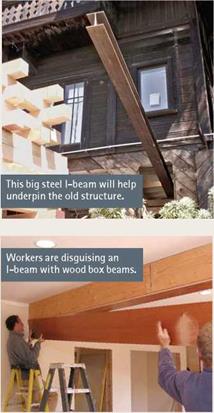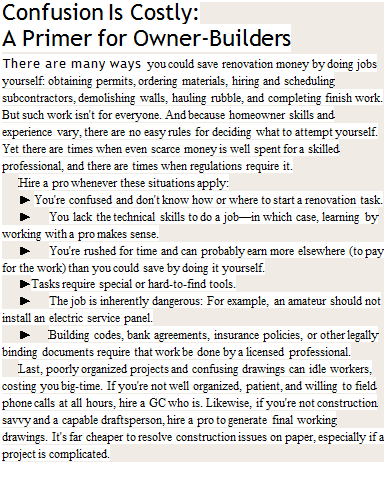Schneider House
The house abounds with tile, often used to case windows and doors. South and Central American objects collected over the years socialize in odd nooks and crannies. A hand-wrought snake handrail slithers up the wall to the left of the stairs.
|
|
could see the light shifting throughout the day, the saturated colors softening and glowing.
All in all: It’s one of the happiest houses you can imagine. Said one guest, "It’s so sensuous. The textures, the colors, the fireplace shape—it’s all so unexpected. It beckons you to explore every nook and cranny.” See the kitchen on p. 323 and the main bath on p. 377.



 Shared thoughts: Marty, on the renovation: "We didn’t rush. We just did things as we could afford them. And in the end, if you take more time, it just doesn’t matter...
Shared thoughts: Marty, on the renovation: "We didn’t rush. We just did things as we could afford them. And in the end, if you take more time, it just doesn’t matter...







 Chisels come in various sizes. Most carpenters can get by with a set of chisels ranging in size from 1A in. to 1 in.
Chisels come in various sizes. Most carpenters can get by with a set of chisels ranging in size from 1A in. to 1 in.
 The easiest way to envision change is to draw it. For this, tape tracing paper over the floor plans you drew earlier and start rearranging rooms. Because you drew your floor plans to scale, your overlay drawings will likely be reasonably accurate. If you’re unsure about the dimensions of a room, a fixture, or a piece of furniture, measure again. Also measure the space you’ll need to open and pass through doors, pull chairs away from a
The easiest way to envision change is to draw it. For this, tape tracing paper over the floor plans you drew earlier and start rearranging rooms. Because you drew your floor plans to scale, your overlay drawings will likely be reasonably accurate. If you’re unsure about the dimensions of a room, a fixture, or a piece of furniture, measure again. Also measure the space you’ll need to open and pass through doors, pull chairs away from a
